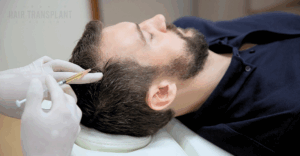Hair Transplant Cost – Complete Guide to Pricing

Demand for hair transplants has risen dramatically in recent years, and
“How much does a hair transplant cost?”
is now one of the most frequently asked questions surrounding the procedure.
Unfortunately, hair transplantation as an industry is prone to misleading or intentionally confusing claims, including pricing. If you find a doctor or clinic whose prices are significantly lower than what others in the same area are offering, do your homework before committing to getting your surgery done there. Remember, the effects of hair transplant surgery are long-lasting, which means unsatisfactory results will stay with you for years to come.
As you’ve undoubtedly discovered if you’ve done any research into the topic, there is not a one-size-fits-all answer to this question. That’s because there are so many factors impacting the final cost of a hair transplant, including who performs the procedure, the geographical location of the clinic, the technique involved and the number of grafts required.
Many people who are considering a hair transplant may feel intimidated by conflicting reports on price, availability and the pros and cons of different hair transplant procedures. As you start to contact different hair restoration doctors, you will probably find their price quotes vary widely. Hair transplants are now more accessible and affordable than ever before, so if you are one of the millions of people whose quality of life would benefit from this procedure, you owe it to yourself to fully understand all the variables that impact cost.
That’s why we’ve put together this thorough guide to helping you understand hair transplant costs and what to look for when you are considering this life-changing procedure.
How Much Do Hair Transplants Cost?
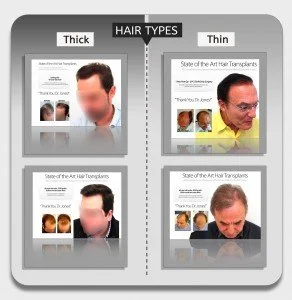
Since so many variables come into play to influence the price of a hair transplant, it can be tricky to figure out what you can expect to pay. As you start to research what different specialists charge, you’ll soon discover pricing can and does vary widely from country to country, city to city and especially clinic to clinic.
How much do hair transplants cost per graft?
Many clinics charge for hair transplants per individual graft, which can initially be confusing. You may see a quote such as “$3 per graft,” which of course appears to be quite low. However, depending on the extent of their hair loss, it is quite common for patients to need between 1,500 and 3,000 hair grafts. Cost per graft is the most significant factor influencing the cost of hair transplant surgery.
Find Out Additional Information About Graft Costing Below

If thinning hair is affecting your self-esteem and you are researching hair restoration surgery as a way to restore a full head of hair, your first concern is probably how much the procedure will cost.
Read OUR COST PER GRAFT ARTICLE HERE >>
Training and qualifications
The team that performs your hair transplant procedure can be another variable affecting the total price tag for the procedure. For example, you may expect to pay more by choosing a doctor with more extensive training who personally does the procedure, as opposed to a hair transplant facility where a team of nurses complete the surgery under the supervision of a doctor. There is a strong difference between these two ways of operating, one way may yield less than favourable results.
Which type of hair transplant is the best option?
In 2020, there are two primary hair transplant methods available: follicular unit transplantation, also known as FUT, and follicular unit excision, also known as FUE. There is typically a price difference between these two techniques because FUT involves extracting the donor hair graft in one large section, or strip, rather than taking out the hair follicles in individual bundles. In general, FUE is more labour-intensive than FUT and tends to be correspondingly more expensive. Whether you opt for a manual hair transplant or a robotic one can also affect the final cost. Both methods are considered effective when performed by a highly skilled medical team.
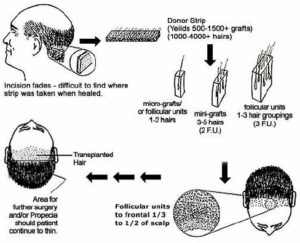
Do hair transplant clinics charge different prices?
The average cost of a hair transplant procedure tends to be more expensive in large population centres that have a higher number of hair transplant clinics because the competition among these clinics will drive an increase in prices.
Is it cheaper to go overseas for a hair transplant?
Hair transplant patients are being lured to black market pirate clinics across the world, at an alarming rate. They are promised low prices and guaranteed results. Unfortunately, these ‘clinics’, where surgeries are performed by non-doctors with little or no training, are causing irreparable harm.
Can I finance hair transplant surgery?
Most health insurance policies will not offset the cost of a hair transplant because it is an elective surgery. Many hair transplant clinics offer financing to make it easier for patients to break up their payments in instalments, rather than paying it off in one lump sum.
Is one hair transplant enough?
Some cases, particularly for patients with more advanced stages of hair loss, require more than one session to achieve the desired results. The number of sessions you need is another significant factor influencing the final cost of a hair transplant surgery. As a good rule of thumb, hair loss regions that are about the size of your fist usually take about 1,500 grafts to fill.
Using this trick, you should be able to visually estimate how many grafts you may need.
Are there any costs following a hair transplant?
Along with the cost of the hair transplant surgery, there may be costs associated with the recovery process, such as antibiotics or pain medication. Some surgeons also prescribe hair-growth drugs like minoxidil to ensure even better results.
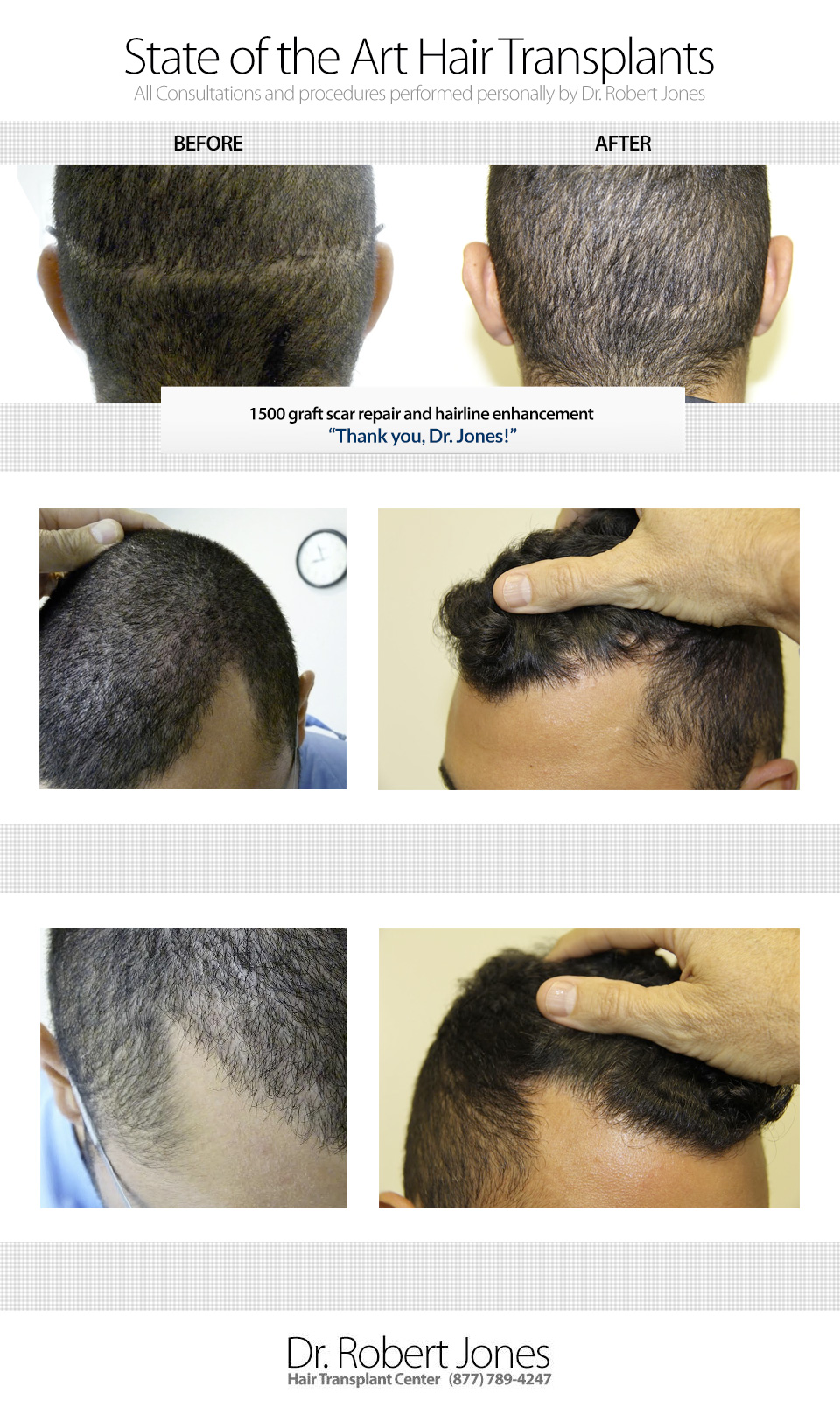
Follicular Unit Excision for Hair Restoration
Hair restoration has come a long way since the days of conspicuous, unnatural-looking “plug-style” surgery. The field of hair restoration continues to evolve in terms of techniques and technologies that make the process much easier and lead to extremely natural-looking results. Modern hair replacement techniques use existing hair on other parts of your head or body to regrow hair and restore hair density. Follicular unit excision, or FUE, is the paramount method of hair transplantation available today.
Our skilled surgeons were some of the earliest adopters of FUE in North America, and have decades of experience providing this groundbreaking surgery. An FUE hair transplant is a minimally invasive, outpatient procedure that is not only virtually painless, but also leaves no scarring.
Your hair replacement surgeon will remove hair follicles from the donor site in tiny bundles. Transplanting donor hairs one at a time gives the surgeon full control over the placement and direction of each hair in the thinning or bald area. 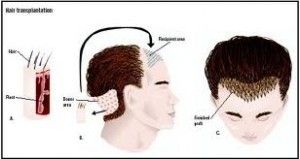
The results of FUE are totally natural, undetectable and permanent, and have shorter recovery times than older surgical techniques as well.
In most patients, the grafts become fully secure in about eight days after surgery, and the surgical wound in the donor area usually heals within one to two weeks.
How Much Does FUE Cost?

Your hair loss pattern is unique, and so your treatment needs to be customized based on your hair loss situation. Moreover, insurance does not cover the costs of cosmetic procedures.
What is no-shave FUE?
The traditional approach to FUE requires the doctor to shave the treatment area. However, patients who opt for FUE hair restoration – especially anyone who is used to wearing their hair longer – may be embarrassed about going back to work or resuming normal daily activities after treatment, unless you are planning to take an extended leave of absence until all your hair has grown back to its pre-procedure length. A new option called no-shave FUE is now available for anyone who wants to keep their hair restoration as inconspicuous as possible.
With this method, the surgeon only has to trim the donor follicle hairs, while keeping all other hair at the same length. During the procedure, Dr. Jones or Dr. Huber will conceal the trimmed donor follicles among the remaining full-length hair, resulting in a completely normal, natural post-transplant appearance. Small, one-centimetre donor areas allow skilled doctors to keep the FUE process and eventual outcome virtually undetectable for both men and women.
Benefits of the No-Shave FUE method:
- Patients can resume normal activities immediately
- Ideal for patients with scarring from previous hair transplant procedures; linear scars from the earlier method remain undetectable
- No-shave FUE fully conceals harvested donor sites
FUE vs. FUT: What’s the Difference?
The primary difference between FUE and other hair transplantation techniques, such as strip surgery, is the method the doctor uses to harvest the hair follicles. With the strip technique – which is also called follicular unit transplantation, or FUT – the surgeon removes a section of the scalp and dissects the individual hair follicles from the strip under the magnifier before grafting them into the desired area. Proportionally, FUT will yield more hair grafts than FUE.
Therefore, if you have relatively large areas of hair loss, an FUT hair transplant can often give you more density of grafts in one session, making it a more cost-effective option for getting closer to attaining a full head of hair. When performed by an experienced hair transplant surgeon, both FUE and FUT can provide excellent results.
There are pros and cons to both approaches – usually including cost – but in general, the FUE technique is associated with more comfort, a shorter recovery time and the most natural-looking results without any scarring.
Comparing Hair Restoration in Other Countries
Aside from the potential of significant cost savings, traveling to another country to get a hair transplant gives people the opportunity to get their surgery done incognito. It also provides a built-in excuse for a vacation to a foreign country, allowing the patient to heal while they enjoy exploring new sights, sounds and scenery.
Aside from being outstanding destinations for a foreign getaway, countries like India, Mexico, Costa Rica, the Dominican Republic, Turkey, Thailand and the Philippines serve thousands of hair restoration patients each year. While the price of hair transplants abroad is generally less expensive than it is in most Canadian and U.S.-based clinics, the same factors that influence the differences in cost still apply to foreign countries. As we mentioned earlier, there are also travel expenses to consider when seeking hair restoration abroad.
Shopping for the Best Hair Restoration Surgeon
Ultimately, when it comes to hair restoration surgery, you owe it to yourself to make sure you are getting the best value for your money. An unqualified or inexperienced person may offer cut-rate pricing in an attempt to lure new patients. If you see a lower price advertised than what you have come to expect from other doctors, research the facility and credentials to see if you can find out why.
Former patients’ results are the best way to evaluate the capabilities of a hair transplant clinic or doctor. Reviewing former patients’ before-and-after photos or videos can provide you with the most accurate idea of the quality of work a given doctor can provide.
At Toronto Hair Transplant Surgeons, Dr. Jones, Dr. Huber and their surgical team use proven medical protocols, along with the most advanced equipment and technology available.
By focusing on providing outstanding results, we ensure excellent patient satisfaction across the board.
Surgical technique, your surgeon’s experience, the number of grafts required and the location where you choose to get your hair transplant are all factors that play a significant role in your final hair transplant cost.
At Toronto Hair Transplant Surgeons, Dr Jones and Dr Huber offer both FUT and FUE surgeries.
As leading Canadian hair transplant physicians, both Dr Huber and Dr Jones are some of the most sought-after hair surgeons from patients from around the world. Not only do they set the standard for patient care and outstanding outcomes, but they personally perform all transplant sessions themselves, taking great care in determining the pattern and direction of each transplanted hair.
Dr. Huber is the only hair restoration surgeon in the world who has trained this closely with Dr. Jones. This intensive training with the world’s leading hair restoration surgeon has allowed Dr. Huber’s skills and artistry to far exceed that of his peers. Since 2018, Dr. Jones and Dr. Huber have partnered to bring you The Toronto Hair Transplant Surgeons.
Our doctors have incorporated highly advanced techniques into their hair transplants to provide the best-quality grafts. If you are seeking to improve your life with hair restoration surgery, don’t let worries about pricing stand between you and the full, healthy head of hair you have always dreamed of.
Contact Dr Jones today or Dr Huber to schedule your no-cost, no-obligation patient consultation and learn more about hair transplant costs.
The Toronto Hair Transplant Surgeons Difference
1) Clinic Inside Photos




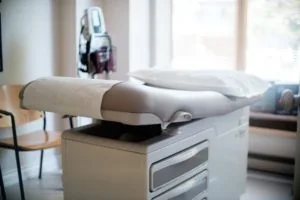
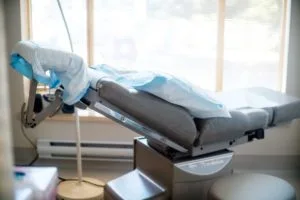
2) Financing Options At the Toronto Hair Transplant Clinic

Related Articles

YOU NEED TO KNOW – The Complete Guide to Hair Transplant Cost
As surgical hair transplant techniques become increasingly sophisticated, the demand for hair transplants has experienced a sharp uptick in recent years.

10 Things That Affect the Cost of Hair Transplants
This is one of the biggest factors that will affect the cost of a hair transplant. The number of grafts you need will depend on how much hair

What factors contribute to the costs associated with getting a hair transplant?
While a significant percentage of the population shows a good amount of interest and curiosity in getting a hair transplant as a treatment

Cost of Hair Transplants
It is difficult to give an exact quote without seeing you or at least seeing some photographs. The cost of an FUE procedure varies related to the number of grafts that will be transplanted.

Demand for hair transplants has risen dramatically in recent years, and “How much does a hair transplant cost?” is now one of the most frequently asked questions surrounding the procedure. However, as you’ve undoubtedly discovered if you’ve done any research into the topic, there is not a one-size-fits-all answer to this question. That’s because there are so many factors impacting the final cost of a hair transplant, including who performs the procedure, the geographical location of the clinic, the technique involved and the number of grafts required.
Many people who are considering a hair transplant may feel intimidated by conflicting reports on price, availability and the pros and cons of different hair transplant procedures. As you start to contact different hair restoration doctors, you will probably find their price quotes vary widely. Hair transplants are now more accessible and affordable than ever before, so if you are one of the millions of people whose quality of life would benefit from this procedure, you owe it to yourself to fully understand all the variables that impact the cost.
That’s why we’ve put together this thorough guide to helping you understand hair transplant costs and what to look for when you are considering this life-changing procedure.
How Can You Know How Much a Hair Transplant Costs?
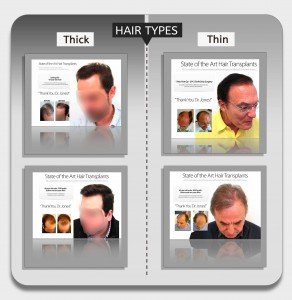 Since so many variables come into play to influence the price of a hair transplant, it can be tricky to figure out what you can expect to pay. As you start to research what different specialists charge, you’ll soon discover pricing can and does vary widely from country to country, city to city and especially clinic to clinic.
Since so many variables come into play to influence the price of a hair transplant, it can be tricky to figure out what you can expect to pay. As you start to research what different specialists charge, you’ll soon discover pricing can and does vary widely from country to country, city to city and especially clinic to clinic.
Here are a few important things to keep in mind when researching your hair transplant.
- Cost per graft: Many clinics charge for hair transplants per individual graft, which can initially be confusing. You may see a quote such as “$3 per graft,” which of course appears to be quite low. However, depending on the extent of their hair loss, it is quite common for patients to need between 1,500 and 3,000 hair grafts. Cost per graft is the most significant factor influencing the cost of hair transplant surgery.
- Training and qualifications: The person or people who perform the procedure can be another variable affecting the total price tag. For example, you may expect to pay more by choosing a doctor with more extensive training who personally does the procedure, as opposed to a hair transplant facility where a team of nurses complete the surgery under the supervision of a doctor.
- The type of hair transplant procedure: Today, there are two primary hair transplant methods: follicular unit transplantation, or FUT, and follicular unit extraction, or FUE. There is typically a price difference between these two techniques because FUT involves extracting the donor hair graft in one large section, or strip, rather than taking out the hair follicles in individual bundles. In general, FUE is more labour-intensive than FUT and tends to be correspondingly more expensive. Whether you opt for a manual hair transplant or a robotic one can also affect the final cost.
- Location of the clinic: The average cost of a hair transplant procedure tends to be more expensive in large population centres that have a higher number of hair transplant clinics because the competition among these clinics will drive an increase in prices.
- Travel costs: The rise of medical tourism has also led to the popularity of travelling abroad to countries like Thailand, Turkey and India to receive hair transplants. If you choose to go to a different country to seek hair restoration surgery, be sure to factor in the costs of airfare, meals and hotel stays.
- Financing options: Most health insurance policies will not offset the cost of a hair transplant because it is elective surgery. Many hair transplant clinics offer financing to make it easier for patients to break up their payments in instalments, rather than paying it off in one lump sum.

- The number of sessions required: Some cases, particularly for patients with more advanced stages of hair loss, require more than one session to achieve the desired results. The number of sessions you need is another significant factor influencing the final cost of hair transplant surgery. As a good rule of thumb, hair loss regions that are about the size of your fist usually take about 1,500 grafts to fill. Using this trick, you should be able to visually estimate how many grafts you may need.
- Potential costs after a transplant: Along with the cost of the hair transplant surgery, there may be costs associated with the recovery process, such as antibiotics or pain medication. Some surgeons also prescribe hair-growth drugs like minoxidil to ensure even better results.
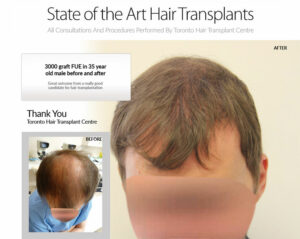
Follicular Unit Excision for Hair Restoration
Hair restoration has come a long way since the days of conspicuous, unnatural-looking “plug-style” surgery. The field of hair restoration continues to evolve in terms of techniques and technologies that make the process much easier and lead to extremely natural-looking results. Modern hair replacement techniques use existing hair on other parts of your head or body to regrow hair and restore hair density. Follicular unit excision, or FUE, is the paramount method of hair transplantation available today. The surgeons here at the Toronto Hair Transplant Surgeons were some of the earliest adopters of FUE in North America and have decades of experience providing this groundbreaking surgery. An FUE hair transplant is a minimally invasive, outpatient procedure that is not only virtually painless but also leaves no scarring. Your hair replacement surgeon will remove hair follicles from the donor site in tiny bundles. Transplanting donor hairs one at a time gives the surgeon full control over the placement and direction of each hair in the thinning or bald area. The results of FUE are totally natural, undetectable and permanent, and have shorter recovery times than older surgical techniques as well. In most patients, the grafts become fully secure in about eight days after surgery, and the surgical wound in the donor area usually heals within one to two weeks.
What Is No-Shave FUE?
The traditional approach to FUE requires the doctor to shave the treatment area. However, patients who opt for FUE hair restoration – especially anyone who is used to wearing their hair longer – may be embarrassed about going back to work or resuming normal daily activities after treatment, unless you are planning to take an extended leave of absence until all your hair has grown back to its pre-procedure length. A new option called no-shave FUE is now available for anyone who wants to keep their hair restoration as inconspicuous as possible. With this method, the surgeon only has to trim the donor follicle hairs, while keeping all other hair at the same length. During the procedure, the doctor will conceal the trimmed donor follicles among the remaining full-length hair, resulting in a completely normal, natural post-transplant appearance. Small, one-centimetre donor areas allow our skilled doctors to keep the FUE process and eventual outcome virtually undetectable for both men and women.
Benefits of the No-Shave FUE Method:
- Patients can resume normal activities immediately
- Ideal for patients with scarring from previous hair transplant procedures; linear scars from the earlier method remain undetectable
- No-shave FUE fully conceals harvested donor sites
FUE vs. FUT: What’s the Difference?
The primary difference between FUE and other hair transplantation techniques, such as strip surgery, is the method the doctor uses to harvest the hair follicles. With the strip technique – which is also called follicular unit transplantation, or FUT – the surgeon removes a section of the scalp and dissects the individual hair follicles from the strip under the magnifier before grafting them into the desired area. Proportionally, FUT will yield more hair grafts than FUE. Therefore, if you have relatively large areas of hair loss, a FUT hair transplant can often give you more density of grafts in one session, making it a more cost-effective option for getting closer to attaining a full head of hair. When performed by an experienced hair transplant surgeon, both FUE and FUT can provide excellent results. There are pros and cons to both approaches – usually including the cost – but in general, the FUE technique is associated with more comfort, a shorter recovery time and the most natural-looking results without any scarring.
Related Articles
Top 10 FUE Transplant Myths
VIDEO CASE STUDY – 3500 Graft FUE – 33-Year-Old Male
Comparing Hair Restoration in Other Countries
Aside from the potential of significant cost savings, travelling to another country to get a hair transplant gives people the opportunity to get their surgery done incognito. It also provides a built-in excuse for a vacation to a foreign country, allowing the patient to heal while they enjoy exploring new sights, sounds and scenery.
Aside from being outstanding destinations for a foreign getaway, countries like India, Mexico, Costa Rica, the Dominican Republic, Turkey, Thailand and the Philippines serve thousands of hair restoration patients each year. While the price of hair transplants abroad is generally less expensive than it is in most Canadian and U.S.-based clinics, the same factors that influence the differences in cost still apply to foreign countries. As we mentioned earlier, there are also travel expenses to consider when seeking hair restoration abroad.
Shopping for the Best Hair Restoration Surgeon
Ultimately, when it comes to hair restoration surgery, you owe it to yourself to make sure you are getting the best value for your money. An unqualified or inexperienced person may offer cut-rate pricing in an attempt to lure new patients. If you see a lower price advertised than what you have come to expect from other doctors, research the facility and credentials to see if you can find out why.
Former patients’ results are the best way to evaluate the capabilities of a hair transplant clinic or doctor. Reviewing former patients’ before-and-after photos or videos can provide you with the most accurate idea of the quality of work a given doctor can provide.
At the Toronto Hair Transplant Surgeons, our doctors and the surgical team use proven medical protocols, along with the most advanced equipment and technology available. By focusing on providing outstanding results, we ensure excellent patient satisfaction across the board.
Lower Costs, Improved Results
Surgical technique, your surgeon’s experience, the number of grafts required and the location where you choose to get your hair transplant are all factors that play a significant role in your final hair transplant cost. Ultimately, you should not focus solely on finding the lowest available cost for your hair transplant, but instead on getting the best results for the price. The goal is to get a hair transplant that will improve your quality of life for years to come.
At Toronto Hair Transplant Surgeons, we offer both FUT and FUE surgeries. As a leading Canadian hair transplant clinic, our doctors are two of the most sought-after hair surgeons from patients from around the world. Not only do we set the standard for patient care and outstanding outcomes, but our doctors personally performs all transplant sessions themselves, taking great care in determining the pattern and direction of each transplanted hair.
Our doctors have incorporated highly advanced techniques into the hair transplants we offer, to provide the best-quality grafts. Our very own Dr Jones pioneered the technique called micro-follicular unit excision, which is the most precise method of hair transplantation available today. And, without salespeople and other middlemen involved, our doctors can provide these state-of-the-art hair transplant procedures for less than you may think.
If you are seeking to improve your life with hair restoration surgery, don’t let worries about pricing stand between you and the full, healthy head of hair you have always dreamed of. Contact us today to schedule your no-cost, no-obligation patient consultation and learn more about hair transplant costs.





